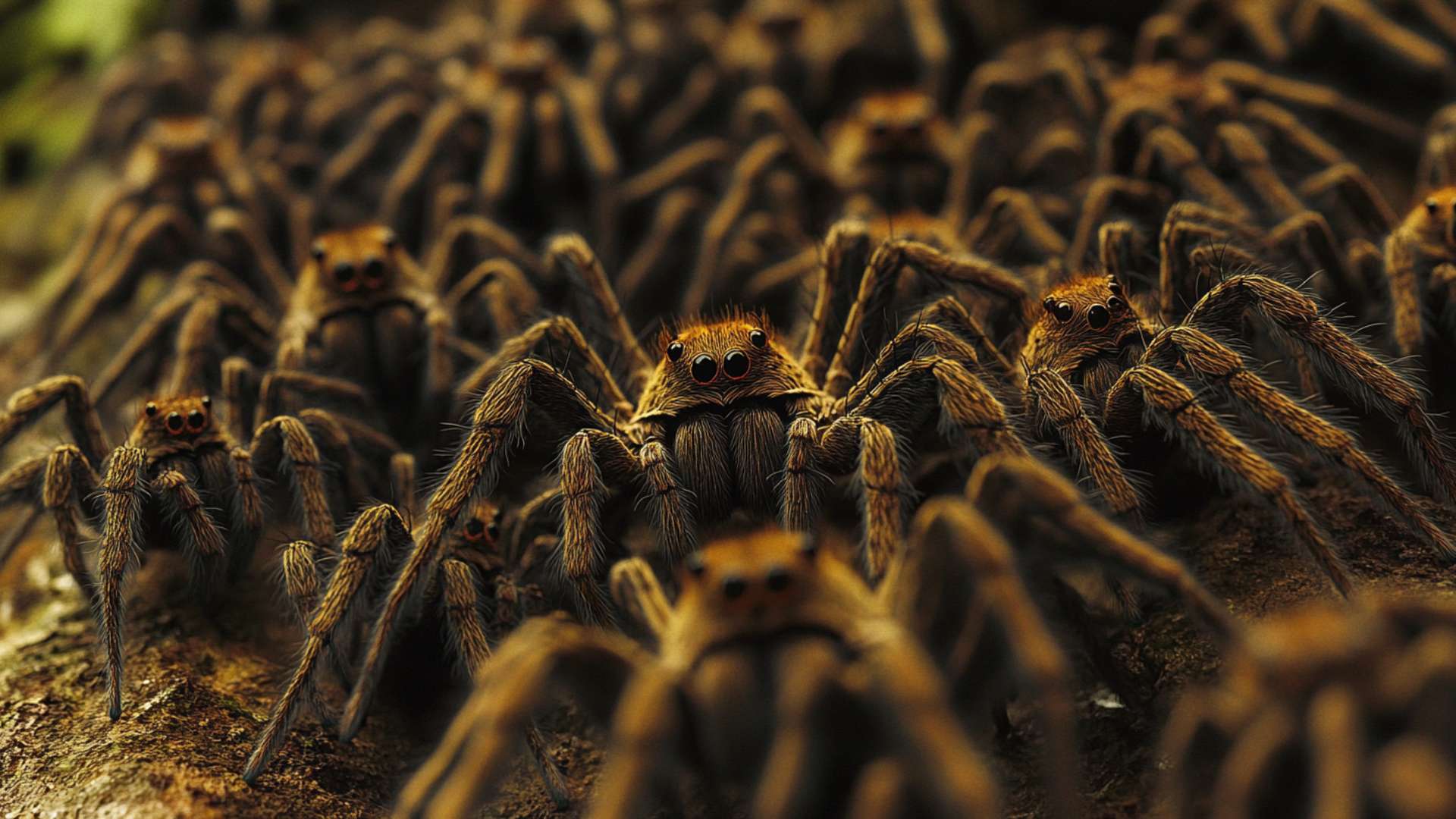Welcome to a comprehensive guide on spider prevention and control! Spiders, those eight-legged arachnids, are no strangers to our homes. Whether you live in the city or countryside, chances are you’ve encountered these creepy crawlers at some point.
While spiders play a crucial role in maintaining ecological balance by preying on insects, their presence indoors can be quite unsettling for many people. In this article, we will explore why spiders often find their way into our homes and the importance of implementing effective prevention strategies for health and safety.
Discover Our Expert Spider Control and Extermination Solutions! Find out how our seasoned team effectively deals with spider infestations. Click to explore our specialized spider control and extermination services for comprehensive solutions.
Why spiders are a common household nuisance
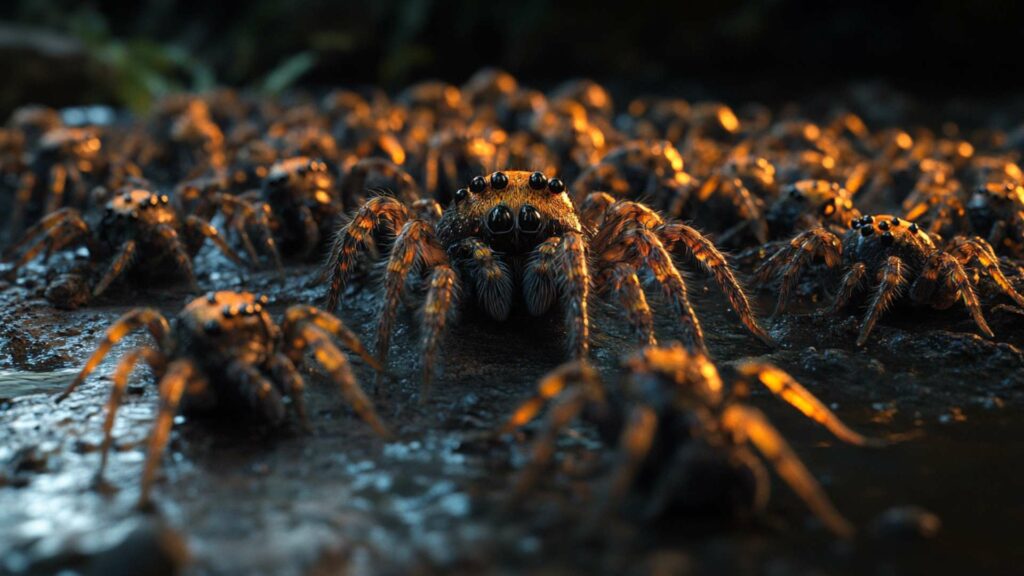
Spiders seek shelter in our homes for various reasons. Firstly, our houses provide them with protection from predators while offering an abundance of prey in the form of other insects too.
Additionally, spiders can easily squeeze through tiny cracks and gaps in doors and windows that we may not even notice. They can also hitch a ride on unsuspecting items carried inside – think about those cardboard boxes from the garage that have been sitting untouched for months!
Among the most common house-dwelling spiders are cellar spiders (also known as “daddy longlegs cellar spider”), which thrive in dark corners and areas with low traffic. These critters love cluttered spaces where they can build their messy webs undisturbed.
Another reason why spiders are such unwelcome guests is their ability to reproduce rapidly. A single female spider can lay hundreds of eggs at once, resulting in an exponential increase in population if left unchecked.
The importance of spider prevention for health and safety
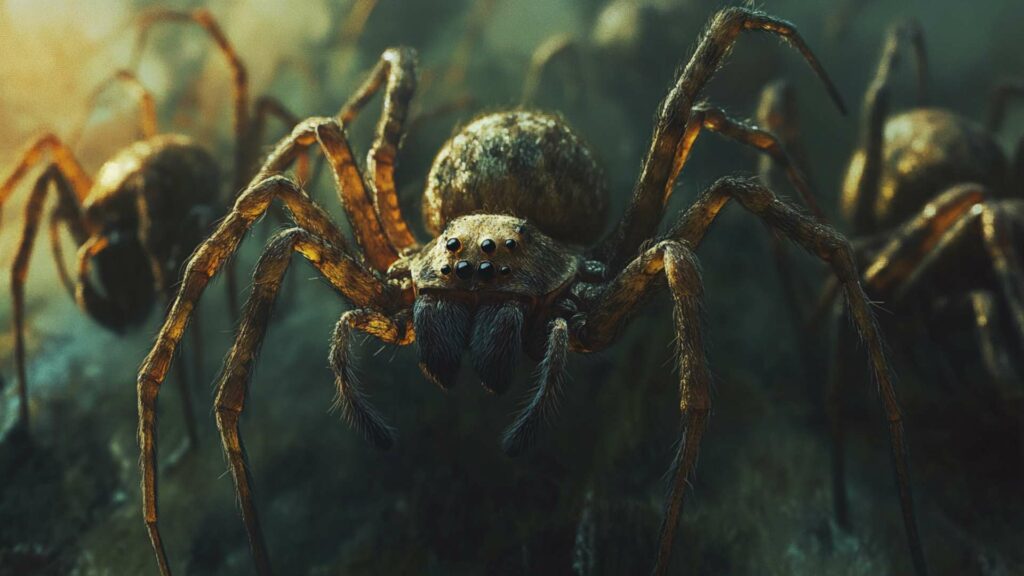
While many spiders found indoors pose little threat to humans, some species could cause issues if their populations grow out of control or if you happen to have an unfortunate encounter with certain venomous types. Furthermore, spider droppings (affectionately known as “spider poop”) can accumulate over time and contribute to respiratory problems, especially in individuals with allergies or asthma.
Therefore, taking proactive measures to prevent spider infestations is crucial for maintaining a healthy living environment. Spider prevention not only safeguards our well-being but also helps avoid potential pest infestations.
Remember, spiders primarily enter our homes in search of food sources – those pesky insects that can wreak havoc on our comfort. By addressing the spider issue at its root, we simultaneously reduce the presence of their prey, creating a more harmonious and bug-free household.
Keeping Spiders at Bay While Sleeping
Are you tired of waking up to unwelcome eight-legged guests? Our comprehensive guide on how to keep spiders away while sleeping offers valuable insights and practical tips to ensure a spider-free slumber. Discover effective techniques for safeguarding your bedroom from arachnid intruders.
Securing Your Basement Against Spiders
Shielding your basement from spider infestations is crucial. Learn expert strategies in our article on how to keep spiders out of the basement and create a spider-resistant underground space. We provide valuable advice on identifying and addressing spider problems in your basement.
Spider-Free Garage Solutions
Is your garage a spider haven? Explore our guide on how to keep spiders out of the garage for practical tips and preventive measures. Take control of your garage space by implementing effective spider deterrents.
Preserving Your Porch from Spiders
Enjoy your outdoor spaces without spider interference. Our article on how to keep spiders off the porch reveals tricks and techniques to maintain a spider-free porch area. Make your porch a haven for relaxation, not an arachnid hangout.
Dealing with Yellow Sac Spiders
Concerned about yellow sac spiders in your home? Our comprehensive guide on how to get rid of yellow sac spiders provides valuable insights and effective removal methods. Say goodbye to these arachnid intruders.
Managing Grass Spiders Indoors
Grass spiders taking over your house? Our article on how to get rid of grass spiders in the house offers solutions and prevention techniques. Reclaim your indoor spaces from these unwelcome guests.
Eliminating Cellar Spiders
Cellar spiders causing a nuisance? Discover effective strategies in our guide on how to get rid of cellar spiders and regain control of your home’s cellar or basement. Learn to identify and address cellar spider infestations.
Saying Farewell to Daddy Long-Leg Spiders
Daddy long-leg spiders overstaying their welcome? Explore our article on how to get rid of daddy long-leg spiders for practical tips and expert advice on their removal. Reclaim your space from these leggy intruders.
Dealing with Camel Spiders
Camel spiders causing concern? Our comprehensive guide on how to get rid of camel spiders provides insights into identifying and addressing these arachnid visitors. Take action to maintain a spider-free environment.
Banishing Brown Recluse Spiders
Brown recluse spiders can be a serious problem. Our guide on how to get rid of brown recluse spiders offers valuable insights and practical tips for effective removal and prevention. Protect your home and loved ones from these potentially dangerous spiders.
Understanding Spiders: An Overview
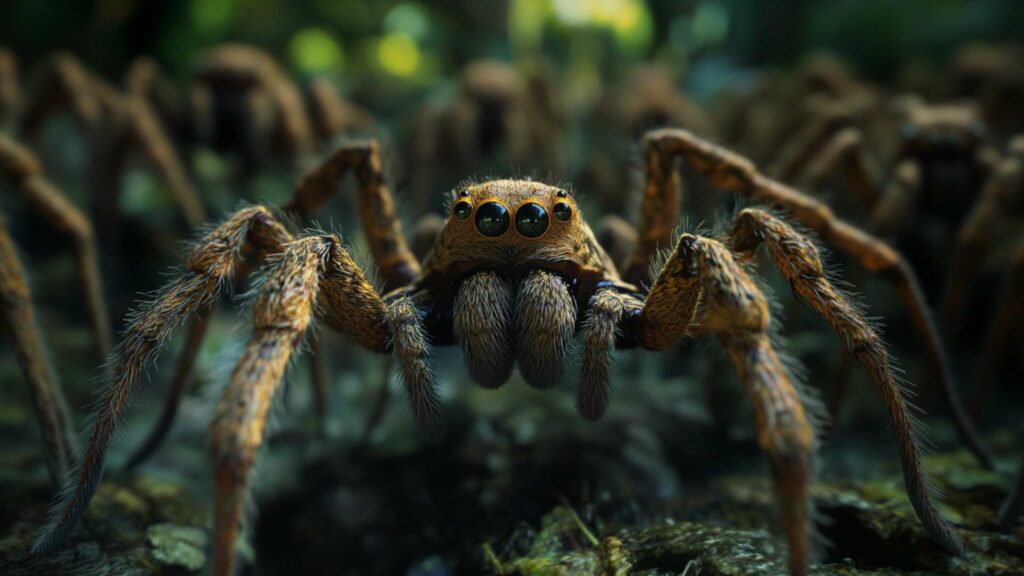
Different types of spiders commonly found in homes
Spiders are intriguing creatures that often find their way into our homes, seeking shelter and a steady supply of food. While there are numerous species of spiders, a few particular types tend to make themselves at home indoors. Let’s explore some of these common household spiders and gain a better understanding of their habits and characteristics.
Cobweb spiders: Weavers of messy, abandoned webs
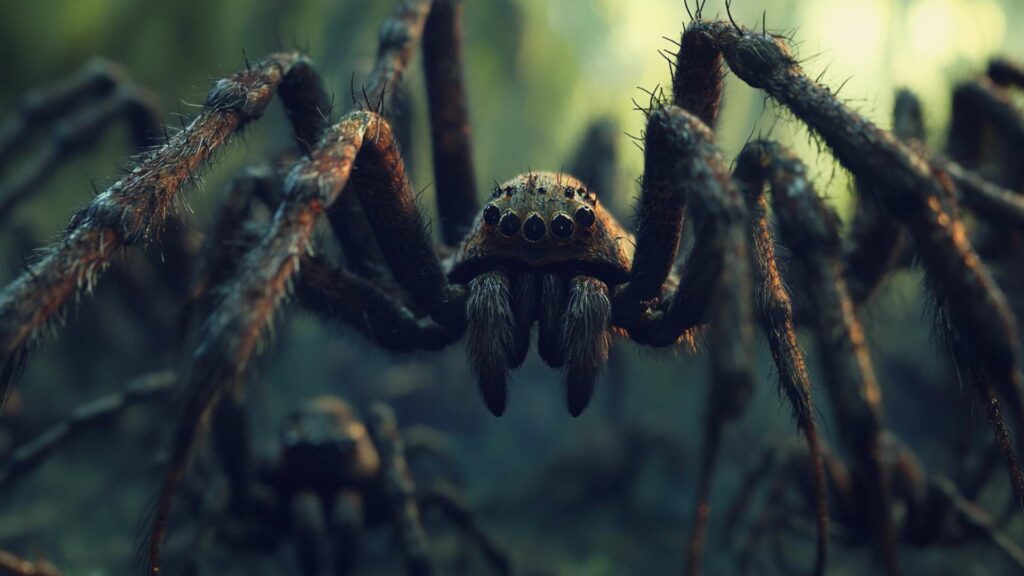
Cobweb spiders, also known as comb-footed or tangle-web spiders, are notorious for creating messy webs that often appear abandoned. These webs can be found in corners, ceilings, and other secluded spots where they wait to catch unsuspecting prey.
Cobweb spiders typically spin webs and feed on small flying insects like mosquitoes and flies. Their webs may go unnoticed until they gather enough food to sustain themselves, leading to an unpleasant surprise when you stumble upon their intricate traps.
Cellar spiders: Delicate, long-legged arachnids often found in dark corners
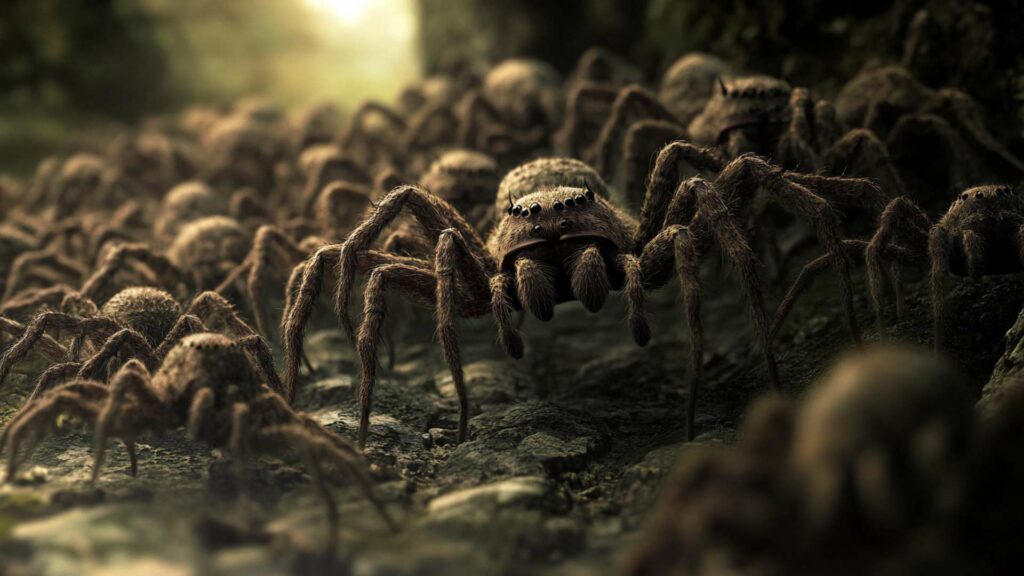
Cellar spiders, sometimes called daddy longlegs due to their long legs and small bodies, are delicate arachnids that tend to inhabit dark corners or damp spaces like basements or crawlspaces. Their light brown bodies with elongated legs allow them to squeeze into tight nooks and crannies where they can hide undisturbed. Cellar spiders primarily feed on small insects like ants and flies that venture into their territories.
Jumping spiders: Agile hunters with excellent vision
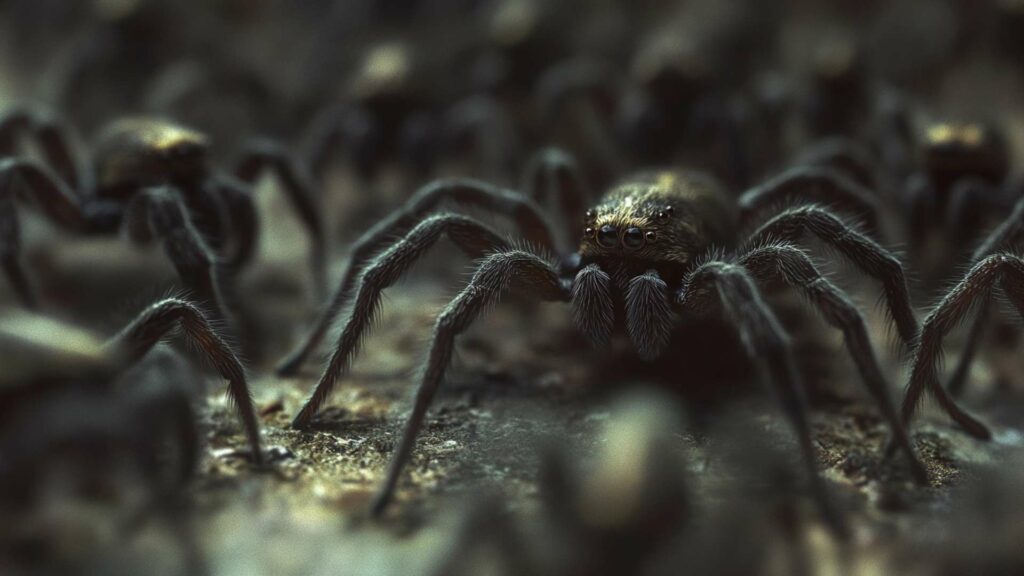
Jumping spiders stand out from the crowd due to their incredible agility and remarkable eyesight. These compact arachnids possess the ability to leap impressive distances compared to their size in order to capture prey.
With exceptional vision thanks to multiple pairs of eyes (2 large central ones), jumping spiders can track and stalk their victims with ease. They and other spiders are known to be active hunters and often target a variety of insects, making them valuable allies in natural pest control.
Wolf spiders: Fast runners that prefer ground-dwelling habitats

Wolf spiders, named for their hunting prowess rather than any inherent danger, are formidable creatures that rely on speed and stealth to capture their prey. These relatively large spiders have stout bodies with hairy legs and are commonly found in ground-dwelling habitats like gardens, lawns, or wooded areas around homes. Wolf spiders do not spin intricate webs to catch their food but instead chase down insects such as crickets and grasshoppers using their impressive speed.
While they may initially startle due to their size, they play an essential role in controlling other insect populations. Understanding the different types of spiders commonly found in homes can help us identify and appreciate the diversity within these arachnid species.
From the messy cobweb weavers to the delicate cellar dwellers, the agile jumping hunters to the speedy ground-runners, each spider has its own unique characteristics and behaviors. By familiarizing ourselves with these creatures, we can better appreciate their role in nature while also taking necessary steps for spider prevention and control within our homes.
Identifying Spider Infestations
The Webs that Haunt Your Home
Picture this: You’re casually strolling through your living room when suddenly, you walk face-first into a sticky, invisible barrier. Annoyed, you realize it’s yet another spider web.
This first sign is a telltale indication of spider presence in your home. Spiders, the meticulous spinners that they are, create their intricate webs in corners, ceilings, and even windowsills.
Cobweb spiders and cellar spiders are notorious for leaving behind abandoned webs like forgotten tapestries. These tangled traps often accumulate dust and other debris over time, catching glimpses of light as they sway gently in the breeze.
An Uninvited Eight-Legged Guest
While some might find spiders fascinating beings worthy of admiration from afar, encountering live spiders indoors can be quite unsettling for many individuals. Frequent sightings of these arachnids scuttling across the walls or floors can be a clear indication of an infestation.
It’s not uncommon to spot jumping spiders stealthily hunting their prey or wolf spiders sprinting across the room with grace reminiscent of Olympic runners. Even daddy long legs—those delicate creatures with eight legs between their thin appendages—can make themselves at home within the cozy confines of yours.
A Grim Reminder: Shed Exoskeletons and Deceased Insects
If stumbling upon webs and encountering live spiders wasn’t enough to make your skin crawl, finding shed exoskeletons and remnants of deceased insects caught in those creepy constructions surely will! Spiders regularly molt as they grow larger; shedding their old exoskeletons like discarded armor. These ghostly relics serve as evidence that not only have you crossed paths with these eight-legged creatures but also that they’ve made themselves at home within your abode.
Additionally, inspecting the spider webs themselves may reveal a macabre sight: hapless bugs trapped, wrapped in silk, and intended for future feasts. It’s a stark reminder that spiders are nature’s own pest control officers.
Spider Infestation Search: The Web’s Secrets Unveiled
Once you notice any signs of spider presence mentioned above, it becomes imperative to conduct a thorough inspection to assess the extent of the infestation. Grab a flashlight and methodically search your home’s nooks and crannies. Check dark corners, basements, and any other potential hiding spots where spiders might lurk.
Look for visible egg sacs—small silken pouches often containing hundreds of eggs—affixed discreetly to walls or tucked away beneath furniture. By recognizing these telltale indicators of spider intrusion, you can take swift action towards effective spider prevention and control.
Remember, knowledge is power when it comes to handling unwanted arachnids invading your living space. Armed with an understanding of how spiders manifest their presence through visible webs or egg sacs, frequent sightings of live spiders indoors, as well as shed exoskeletons and deceased insects caught in their intricate traps, you can now confidently identify the signs of a spider infestation within your home.
Spider Prevention Strategies for Your Home
Removing potential spider habitats:
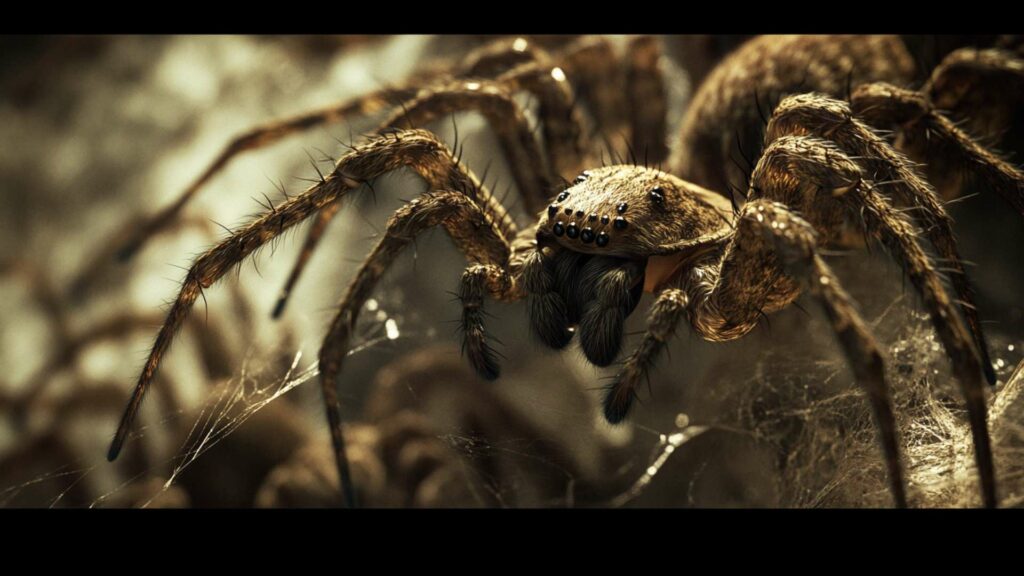
When it comes to spider prevention, one of the most effective strategies is to ensure your home is clean and decluttered. Spiders love cozy nooks and crannies where they can hide undisturbed, so keeping a tidy living space will make your home less appealing to these eight-legged intruders. Regularly vacuuming corners and crevices, sweeping away cobwebs, and dusting hard-to-reach areas will help eliminate spider hiding spots.
Additionally, clearing out your basement of any unnecessary clutter will leave fewer places for spiders to set up their webs. Sealing cracks and crevices is another crucial step in preventing spiders from invading your home.
These resourceful creatures can squeeze through even the tiniest openings, so it’s essential to carefully inspect your house for potential entry points. Look for cracks around windowsills, door and window frames, utility openings, and vents.
Seal these openings with caulk or weatherstripping to create a barrier that spiders cannot penetrate. By denying them easy access into your home, you greatly reduce the chances of a spider infestation.
Managing outdoor surroundings:
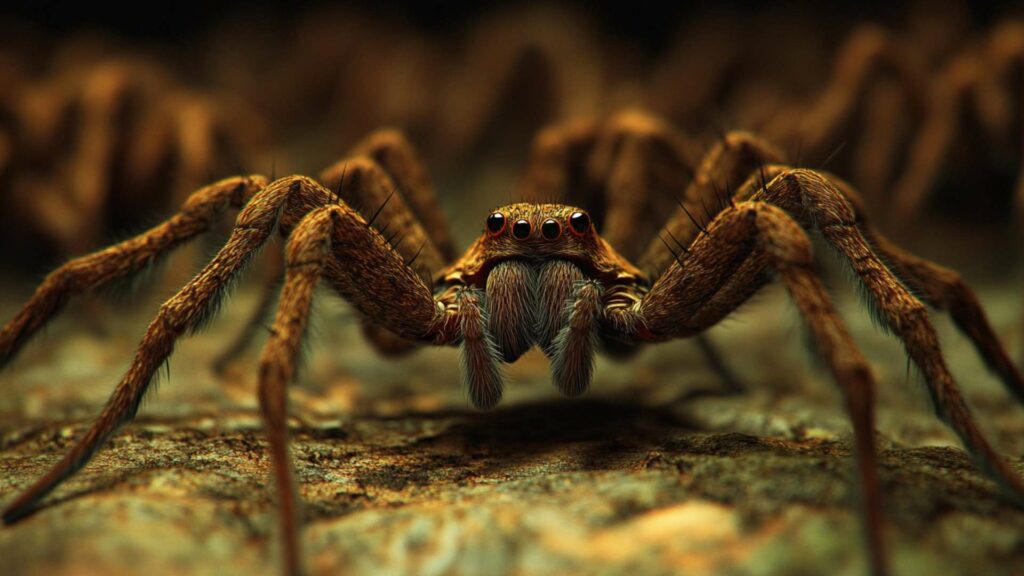
The area surrounding your house can significantly impact spider activity indoors. Trim vegetation near the house as spiders often use plants as bridges to access homes more easily. Overgrown bushes or tree branches touching your walls provide ideal pathways for spiders seeking shelter indoors.
By keeping vegetation neatly trimmed and ensuring it does not come into direct contact with your house structure, you make it harder for spiders to find their way inside. Installing screens on windows and doors is another effective method of blocking spider entry points while still allowing fresh air circulation in your home.
Make sure the screens are intact without any holes or tears that could serve as an invitation for spiders or other bugs seeking refuge from the outdoors. Choose screens made with fine mesh to prevent even the smallest spiders from wriggling their way through.
Remember, spiders are incredibly adept at finding shelter and food sources, so implementing these strategies both indoors and outdoors is crucial for effective spider prevention. By removing potential spider habitats in your home, sealing entry points, managing vegetation around your house, and installing screens on windows and doors, you create a formidable defense against unwanted arachnid intrusions.
So take a proactive approach to spider prevention today. Your efforts will not only keep your home free from creepy crawlers but also contribute to a safer and more peaceful living environment for you and your family.
Natural Spider Repellents and Deterrents
Essential Oils with Spider-Repelling Properties

When it comes to natural spider repellents, essential oils can be a powerful tool in your arsenal. Not only do they provide a pleasant fragrance, but certain oils also have properties that spiders find repulsive.
Two popular choices are peppermint oil and citrus oils such as lemon or orange. Peppermint oil: Known for its refreshing scent, peppermint oil has the added benefit of being an effective spider repellent.
Spiders detest the strong smell of peppermint, making it an ideal natural deterrent. To utilize this oil, simply mix a few drops with water in a spray bottle and generously spritz areas prone to spiders, such as windowsills, doors and window frames, and other potential entry points.
The pungent odor will make spiders think twice before venturing into your home. Citrus oils (lemon or orange): Spiders have an aversion to the acidic aroma of citrus oils like lemon or orange.
These scents not only freshen up your space but also repel these eight-legged pests effectively. Similar to peppermint oil, you can dilute a few drops of citrus oil in water and use it as a spray around windows, door frames, and other vulnerable areas where spiders might try to make themselves at home.
Plants That Naturally Deter Spiders
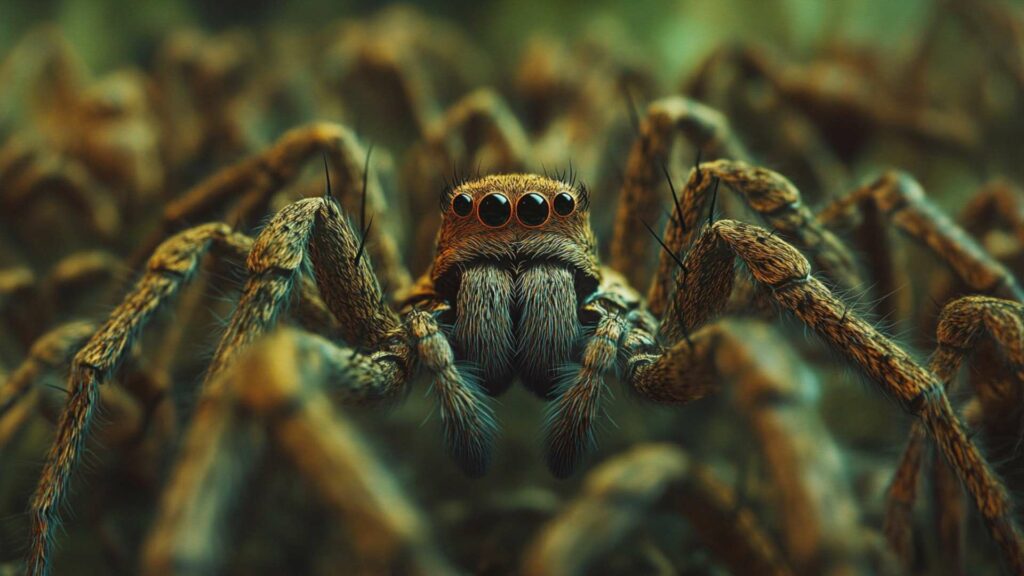
Harnessing the power of plants is another eco-friendly approach to naturally deterring spiders from invading your living space. Certain plants possess properties that spiders find unappealing due to their strong fragrance or chemical makeup.
Eucalyptus: With its distinct scent and high cineole content, eucalyptus is known for keeping many other pests well at bay—including spiders. Placing eucalyptus branches or using eucalyptus oil in areas where spiders commonly lurk, like corners and windows, will help repel them.
Lavender: While humans often find the scent of lavender soothing, spiders cannot stand it. Planting lavender bushes near windows or placing sachets filled with dried lavender in spider-prone areas can discourage their unwanted presence.
Mint: Much like peppermint oil, the strong aroma of mint plants acts as a natural spider deterrent. Planting mint around your home’s perimeter or placing potted mint plants indoors can help keep spiders away.
Conclusion
Incorporating natural repellents and deterrents into your spider prevention and control efforts offers a safe and environmentally friendly alternative to harsh chemical solutions. Essential oils like peppermint, citrus oils such as lemon or orange, and plants like eucalyptus, lavender, and mint all possess properties that spiders find off-putting. By utilizing these natural methods alongside proper cleaning practices, sealing cracks, and eliminating clutter, you can create an environment that is uninviting to spiders.
Remember that when dealing with spider prevention and control methods, it’s important to take into account the specific type of spider you’re dealing with since different spider species may have unique preferences and behaviors. If you have a severe infestation or concerns about venomous spiders, it’s advisable to seek professional assistance for effective eradication.
With these natural repellents at your disposal — as well as ongoing vigilance in maintaining a clean environment — you can significantly reduce the chances of encountering unwanted arachnid visitors in your home. So stay proactive in your efforts to repel these curious creatures naturally while creating an atmosphere that welcomes only two-legged guests!
Frequently Asked Questions:
Achieving a permanent solution to keep spiders away is challenging, but regular cleaning and sealing entry points can help.
The most effective way to prevent spiders from entering is sealing cracks, cleaning, and reducing clutter.
The best approach to stop spiders from entering your home is sealing gaps and maintaining cleanliness.
Keeping your yard clear of debris and vegetation close to the house can help deter spiders.

